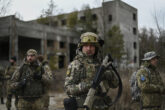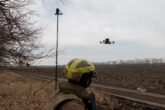August 26, 2021
Why America Can’t Build Allied Armies
The United States’ effort to strengthen the Afghan security forces has come to an ignominious end. The U.S. military spent 20 years and $83 billion building up a force that melted away in a matter of weeks, ceding the country to the Taliban over that period with barely a shot fired.
The swift collapse of the Afghan security forces is not an outlier. In fact, it is closer to the norm for local security forces built up with U.S. military assistance. The United States’ three largest efforts to build partner militaries—in Vietnam, Iraq, and now Afghanistan—have all failed spectacularly. There is good reason the images coming out of Kabul conjure up Saigon in 1975 and Mosul in 2014.
The United States’ partners are often uninterested in building militaries that can fight.
What the military calls “security force assistance,” “building partner capacity,” or “train-and-equip operations” remains a pillar of U.S. defense strategy. Setting Afghanistan and Iraq entirely aside, the United States spends billions of dollars every year and deploys thousands of personnel to train and assist foreign militaries from countries all over the world. Although the purpose of such assistance varies, its main goal is to increase the capacity of partner militaries to shoulder local security burdens so that the United States can shift its own resources to higher priorities.
The problem, however, is that the United States’ partners are often uninterested in building militaries that can fight. As Georgetown University Professor Caitlin Talmadge has shown, political and military leaders have to foster the promotion of competent officers, enforce a chain of command, encourage rigorous training, and put a lid on corruption to create an effective force. But in the weak or failed states where the United States focuses its security assistance, leaders often prioritize their personal and political survival over strengthening their nations’ militaries. These leaders often aim to use their military as a source of patronage or as a cudgel against their domestic political opponents. They may welcome the largess of U.S. military assistance, but they fear building a professional force that could threaten their own power. So they ignore the pleas of U.S. military advisers, implementing policies that keep their militaries weak.
Read the full article from Foreign Affairs.
More from CNAS
-
Defense / Transatlantic Security
When Defense Becomes Destruction: Austria-Hungary’s Mistake and Ukraine’s RiskThis article was originally posted on War on the Rocks. The southeastern Polish city of Przemyśl, with its elegant 19th century Habsburg-era train station, remains one of the ...
By Franz-Stefan Gady
-
Defense / Transatlantic Security
Ukraine’s Catch-22 MomentThis article was originally published in the Financial Times. In Joseph Heller’s wartime classic, Catch-22, the protagonist Yossarian seeks out the US army surgeon Doc Daneeka...
By Franz-Stefan Gady
-
CNAS Insights | Budgetary Own Goals Undermine “Speed and Volume”
On November 7, Secretary of Defense Pete Hegseth laid out a plan to overhaul the Department of Defense’s (DOD’s) acquisition system. Placing an emphasis on delivering new capa...
By Philip Sheers, Carlton Haelig & Stacie Pettyjohn
-
Drones: Who Is Making the New Weapons of War?
From Ukraine and Russia to Gaza and Sudan, drones have become a key weapon of war. Which companies are making them, and profiting from this rapidly expanding but controversial...
By Stacie Pettyjohn




